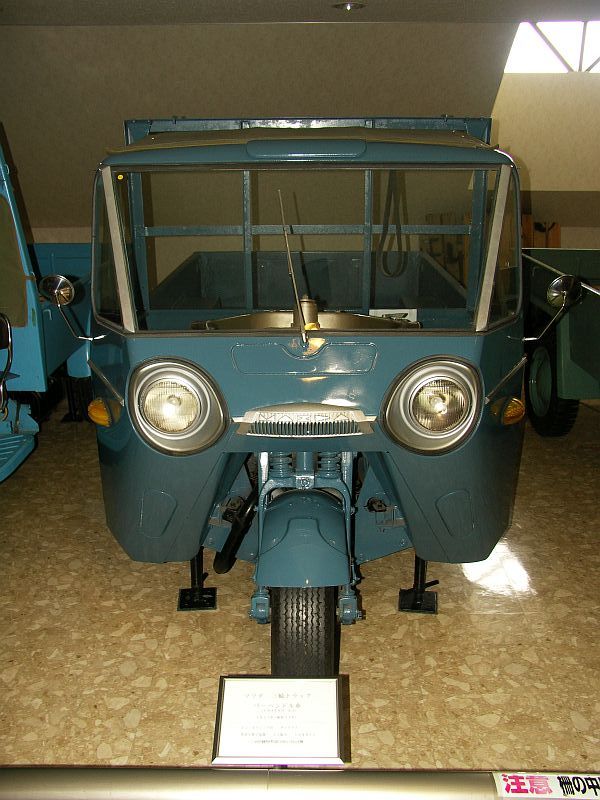Description
The Mazda GLTB was one of the lesser-known early passenger-car variants produced by Toyo Kogyo (Mazda) during the formative years of its move into full automobile manufacturing. Sitting within the same developmental family as the early Mazda GB/GC/GL series of compact saloons, the GLTB represented an incremental evolution of Mazda’s first-generation small-car programme in the early 1960s — a period when the company was transitioning from three-wheeled trucks and micro-vehicles into proper four-wheeled family cars.
Because these early models were sold almost exclusively in Japan and produced in small numbers, documentation is scarce, but the GLTB can be understood as a slightly more refined and updated version of the GB-type saloons. It followed Mazda’s naming structure of the time, in which different letter suffixes identified body variations, trim levels or mechanical updates within the same basic platform.
The GLTB was powered by Mazda’s early in-house four-cylinder OHV engine, a simple and durable 1.0-litre unit producing around 35 horsepower. Although modest, this output was typical for small Japanese saloons at the start of the 1960s, and the focus was on reliability and low operating costs rather than performance. The engine drove the rear wheels through a three-speed manual gearbox, which was easy to maintain and well suited to city traffic and short-distance commuting.
The chassis layout followed Mazda’s conservative but dependable formula of the period. A ladder-frame construction — reflecting Mazda’s roots in commercial-vehicle design — provided strength and rigidity, while independent front suspension with coil springs and a leaf-sprung live rear axle offered predictable handling and a compliant ride on the still-rough roads of the era. The GLTB was compact, manoeuvrable and easy to park, qualities that made it appealing to first-time buyers in Japan’s rapidly expanding urban centres.
Stylistically, the GLTB retained the clean, upright lines characteristic of early Mazda saloons. It featured a simple horizontal grille, round headlamps, a three-box silhouette and minimal ornamentation. Compared with earlier GB variants, the GLTB incorporated slightly updated exterior trim, subtle body-panel refinements and improved detailing, giving it a somewhat more polished appearance. Its shape prioritised interior space and practicality, and while the car was visually conservative, it conveyed modernity by early-1960s Japanese standards.
Inside, the GLTB remained fundamentally utilitarian. Its cabin used vinyl upholstery, durable plastics and straightforward dashboard layouts designed for low cost and ease of use. Instrumentation was basic — speedometer, fuel gauge and essential warning lamps — but the car provided adequate room for four passengers and delivered the comfort level expected from a small saloon of its time.
On the road, the GLTB was calm and predictable. Its modest power output was well suited to the low-speed, stop-start conditions common in Japanese cities. Ride comfort benefitted from the soft suspension tuning, and the car’s compact dimensions made it stress-free to drive in tight streets and back alleys. It was not designed for performance or long-distance touring, but rather as a dependable, economical family car.
Production volumes for the GLTB were limited, and the car was quickly overshadowed by the far more successful Mazda Familia (323) line introduced in 1963. The Familia marked Mazda’s true breakthrough as a four-wheeled car manufacturer, and the earlier GL/GB series effectively served as developmental stepping stones toward that milestone.
Today, the Mazda GLTB is an exceptionally rare vehicle, seldom seen even in Japan. Few examples survive due to its age, limited production, and the modest nature of the model, which did not attract long-term preservation. Nonetheless, the GLTB remains an important part of Mazda’s early history. As one of the company’s foundational passenger cars, it contributed to the engineering experience and manufacturing confidence that would eventually lead to Mazda’s global success with compact saloons, rotary-powered sports cars and world-renowned innovations in the decades that followed.

